Here are some of the features that make a Parachute Labs Racer a better rig:
Note that all these features are standard on all Racer 2k3 rigs.
<click on any picture to get a larger view>Proven Design
In the field for over 45 years with no major recalls or modifications, and with over 43,000 rigs built. You can’t go wrong with a Parachute Labs Racer on your back.
100% Freefly Friendly
The new Racers have zero velcro, zero riser exposure, zero bridle exposure, secure magnetic riser covers and a secure main flap design, which make them 100% freefly friendly.
Over the Shoulder Sizing
Over the shoulder sizing on the Racer is unique. This size varies by 1.5” inches from small to medium then another 1.5” for medium to large. This means the 3-ring assembly sits exactly where it should.
Comfortable Custom Harness
The geometry of the Racer harness is what makes it the most comfortable harness out there. The Racer harness is designed to sit you in a natural and supportive position. The Racer incorporates a lumbar strap that takes up a portion of the your weight from the leg straps.
Sizing is also critical. The Racer harness is sized in three dimensions: over the shoulder, main lift web and horizontal. Some manufacturers don’t even allow for an over the shoulder variable, whereas the shoulder measurement is used as the foundation for the correct fit of each custom harness.
Every harness is built to the customer’s exact size, and if it isn’t comfortable, Parachute Labs will rebuild it. This is their commitment to every jumper and is their unconditional guarantee.
Stainless hardware is optional.
Strongest Harness
The harness is made from MIL Spec “Black Trace” Type 13 webbing. Parachute Labs is the only manufacturer to use this stronger webbing designed to fit parachute hardware without slipping.
Cheaper “Yellow Trace” Type 7 webbing was originally designed for cargo harnesses, and is not as strong.
Stainless hardware is optional.
Lightest Weight
Racers are lightweight. In fact Racers are the lightest of any rig on the market. How can they be both the strongest and lightest the same time? Simple. They use MIL-spec materials and uni-body construction. Harnesses are made from a single piece of webbing (not doubled or layered), and no extras such as plastic reinforcements in the reserve flaps to compensate for design flaws or for cosmetic appeal. The containers are just fabric containers, meant to securely contain the parachutes, and nothing more.
Leg Pads
Leg pads use closed cell foam that will float and not absorb water. An optional metal hooknife can be included. Stainless hardware is optional.
Custom fit, custom sizes
With the Racer’s huge number of available container sizes, you can get a rig that’s made exactly to your specifications. Do you want a container that fits a larger reserve than your main? No problem.
Parachute Labs designs the fit of the harness to your body then they select or design container sizes to fit your canopies. There are over 100 different container size combinations already designed and built (some major manufacturers offer as little as 18 or 19 inflexible rig size combinations). This huge selection makes for a comfortable rig regardless of what canopy combinations you want to put in it.
Maintenance Free Teflon Cutaway Cables
In 1997, Parachute Labs introduced the first Teflon coated cutaway cables. These were just like the familiar yellow Lolon-coated aircraft cables, but had a distinctive red coating. The aircraft cable inside was the same, but the coating was a custom Teflon formulation specifically made this application. After extensive testing, these Teflon cables were found to reduce cutaway actuation forces by an average of 50%. This is a significant reduction.
In 2010, a new formulation of this Teflon cable was developed, and the cables are now orange in color.
Another advantage of the Teflon cables is that they are maintenance free. Did you know you had to oil your yellow lolon-coated cables every month? You do, and you should! This is not required on a Racer.
Stainless hardware is optional.
Non compressible cable housings
In 1988, Parachute Labs introduced non-compressible release cable housing on all Racers.
Standard cable housings used on other rigs compress from 10 to 12 percent, and “Soft” cable housings compress infinitely and pinch the cable as it does. “Soft” should be replaced with metal housings. Non-compressible metal are even better.
Stainless hardware is optional.
Externally Mounted Reserve Pilot Chute
The externally mounted reserve pilotchute provides for direct deployment of the pilotchute into the air stream without having to push any flaps out of the way. It is simply the simplest (KISS) and most direct initiation of canopy deployment available today.
Additionally, the Racer reserve pilot chute was tested at NASA and found to have a Coefficient of Drag of 0.83 – the highest drag of any pilot chute tested.
Total Reserve Pin Protection
The reserve pins are located against the skydiver’s back, making them fully protected, preventing bent pins and premature reserve deployments.
Two pins secure the pilot chute: one at the top and one at the bottom. The closing loop tension is distributed between both pins, making for easy reserve pin extraction, just like on a modern BASE rig.
Magnetic Riser Covers
All new Racers come standard with Secure Magnetic Riser Covers.
Deep Riser Covers
The design of the Racer 2k3 incorporates deep riser covers. This design feature eliminates the need for “Internal” or secondary Riser Covers.
The picture to right explains this.
The Vector3 (on the left) has a shallow main riser cover design. This requires a secondary riser cover in order to fully cover the risers.
The Racer 2k3 (on the right) has deep riser covers, eliminating the need for secondary riser covers.
Main Container Design
Which flap closes first and which flap closes last? On some containers this is critical. The Racer’s Main Container design eliminates this: it doesn’t matter. It can’t be assembled incorrectly.
For the rig to look nice, you should close it in this order: bottom, top, left, right and then tuck the top flap.
Ripcord Pins
Parachute Labs’ subsidiary JCO Metals manufactures the Ripcord Pins for almost every brand of rig out there.
Snap Toggles
This is a non-Velcro toggle, held in place by two snaps, which prevent inertial, premature release of toggles. Reduces lost deployment brake malfunctions. Requires risers made for Snap toggles.
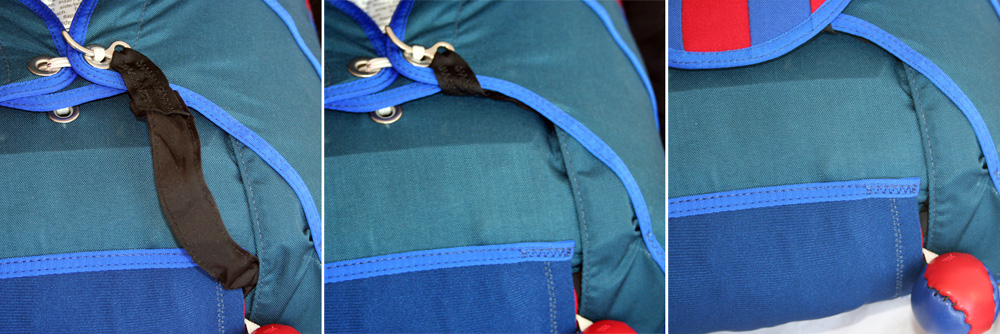

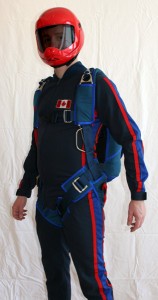

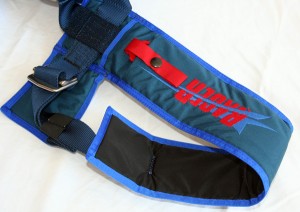
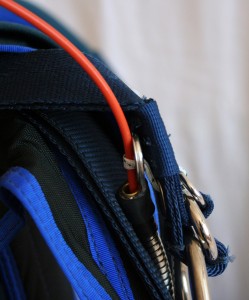
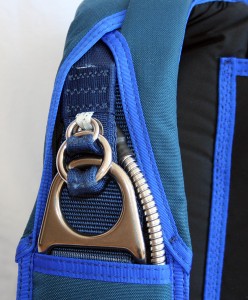

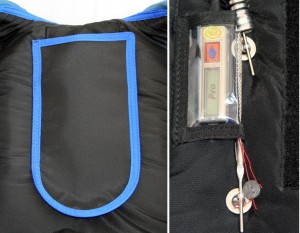
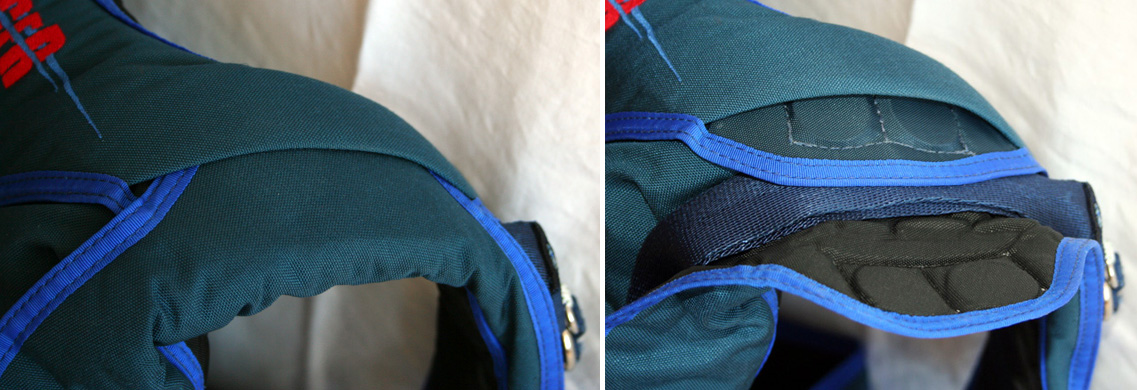
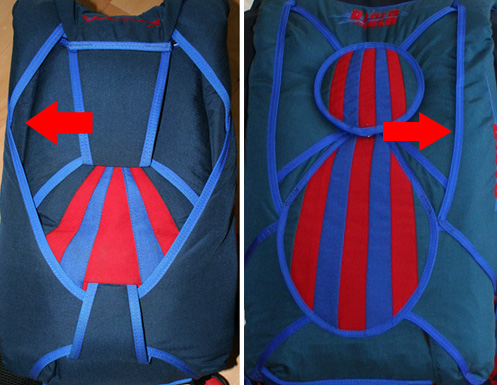
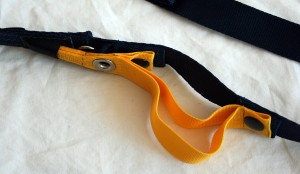
Great job Alain, Thanks!
John Sherman
Thanks for this. I’m a new jumper who will be buying gear soon, and my instructor did recommend a Racer. But their image as an old-timers’ rig, combined with their flat-out awful website, is quite the turn-off. Honestly, what is their marketing team/person thinking? You’ve done a far better job than even they can be bothered to do to promote their rig.
What’s your opinion on the Spectra ripcords that Vector is implementing now on their rigs. I have been told that they are better and are stronger than the traditional lolon cables, also do not have to be oiled.
That’s an interesting question to put on this page.
First, the Orange teflon-coated (Racer) and Yellow Lolon-coated cables (all others) are for the cutaway handle. The Racer teflon-coated cables in this case are superior by far. Less friction, easier cutaway, no maintenance (oiling).
The second part of the question refers to UPT’s spectra ripcord (used for the reserve handle) vs. a traditional steel cable.
The spectra ripcord is an interesting development.
Drawbacks are as follows: it’s Spectra, so it can wear with time, and you have to keep an eye on it for this reason. Secondly, improper swaging of the cable housing could leave burrs that could potentially cut the Spectra ripcord, with deadly consequences. Third, it is impossible to inspect the spectra cable for wear in-between reserve repacks. The main advantage (and the reason I could see getting one) is that the built-in elastic eliminates the reserve handle flopping around in freefall if it falls out of its pocket during a jump, it keeps it tight against the cable housing, which is very cool.
The potential wear issues, and inability to inspect it for wear concern me, but there have been no reports of problems as of yet (2013). As far as strength goes, while spectra in that size may be rated higher than the 600 lb minimum for traditional steel ripcord cables, I *should* never have to pull more than 27 lbs of force to extract my reserve pin(s). (maximum allowed pull force at repack time is 22 lbs + 5 lbs for the seal thread).
The steel cable ripcords has no wear issues, and has no need to be inspected between repack cycles.
Alain, can you please explain about the Racer’s RSL? I played around with the order form on the JumpShack website, but noticed it wasn’t a listed option. Is it standard? DZ.com has comments alluding to a double-sided RSL and an optional single-sided RSL, but I can’t find a better explanation of these. Another poster wrote that he has rarely seen a Racer with any RSL at all. So what’s the deal?
All Racers can come with a RSL as an additional option (not a standard feature). Any Racer can add an RSL easily (without modifications to the rig), the only thing required is for the risers to have RSL rings on them. The Racer RSL is a little different than all the others on the market. The jumper needs to understand the system before he jumps it. Read Parachute Labs’ article on RSLs to find out a little more. Follow the link at the bottom of the page as well for a page with diagrams.
The RSL can be attached with both sides to the same riser making it a one-sided RSL, but this isn’t required as a long as the jumper understands how the RSL works, especially in a 2-out situation.
Alain, I bought my first container, a Racer 2K3. It was your website that made me consider it again, so thanks. I’ve seen people write that Jump Shack might increase its sales and become “cool” again if they’d update their website and overall marketing presentation. I think the job you did here shows that’s true.
Thanks and congrats for making a wise choice!
I have been jumping for 49 years and must admit that I was not fond of the early racers. However I now have a 2K3 and just love it. I have over the years owned all of them starting with Top Secret,classiflyer, Wonder Hog, Vector,Javelyn and Talon, The Racer is by far superior to all of them in many ways. In particular You don’t need any fancy gizmos to be confident that the reserve pilot chute is going to fire of your back like a shot out of a gun,no energy loss in getting away, no need for a big heavy spring loaded pilot chute or a skyhook that is there simply because of loss of energy of the pilot chute getting out and away.
\
Alain… that is quite possibly the best article on why the Jump Shack Racer is THE superior skydiving harness/container on the market. I have been jumping Racers since the mid-eighties. I used to be a dealer for them and my son, Jarrett worked for them and is still a dealer, jumper and Racer supporter. Why is it so hard for me to convince people of what we already know? What can Parachute Labs do to make the Racer a desirable piece of skydiving equipment again?
-Brett
Comments are closed.